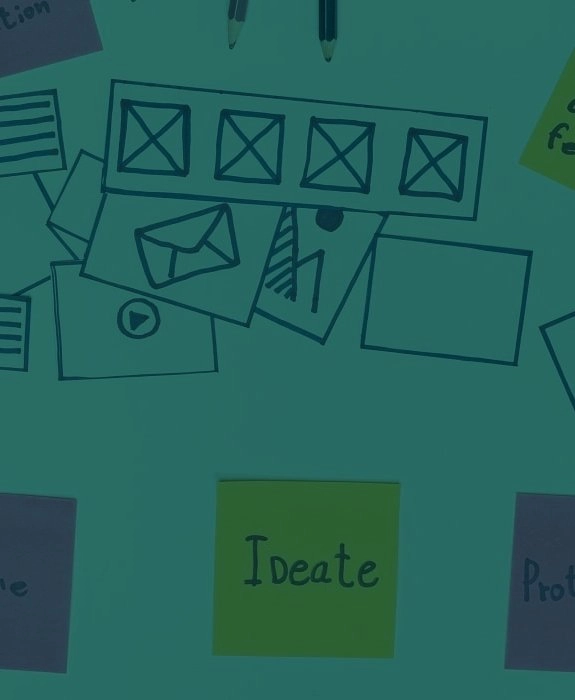Table of Contents
In this guide to web app development, we will cover the following topics:
1. Defining a web application
2. The technologies used in web application development
3. The importance of web application frameworks
4. Coding guidelines
5. The web application development process
6. Trends in web application development services
Defining a web app
A web app is essentially a dynamic website with server-side programming that allows users to interact with the server, using back-end databases to generate results in browsers. A few examples of web applications:
1. Social media networks
2. E-commerce sites
3. Interactive browser games
4. Content management systems
5. Online banking
The technologies used in web application development
There are two major technologies used in the development of web applications.
1. Client-side code: The client-side code is executed by browsers and is available for everyone to see. It can be seen from the View menu, by clicking on View Source. The most common client-side programming languages are:
a. HTML
b. CSS
c. JavaScript
d. Ajax
2. Server-side code: The server-side code is the actual brains of the web application. It determines the running of the web app and is executed by the web server. The most common server-side languages are:
a. Java
b. PHP
c. Node
d. .NET Core
e. Ruby on Rails
f. Python
The importance of web application frameworks
A web application framework is basically a set of program libraries and tools for developers to build complex web applications. By not requiring developers to re-invent the wheel, frameworks reduce the time needed to develop a web app and also allow for a more efficient approach. In the case of HTML and CSS, where the program actions are separated from the logic, frameworks can allow for quick changes by designers. A framework also provides structure so that large teams can implement coding standards, and newer developers joining an existing team can hit the ground running.
Coding guidelines
Coding guidelines are an important set of rules that developers should follow while programming. These rules refer to simple things like naming conventions, how to apply coding logic, formatting and indentation, statements, classes, and more. These rules are generally written down in the documentation so that developers who join the team at a later stage can understand the existing code and take it further. Coding guidelines allow for better version management, improved readability, deeper understanding of the source code and creates the best environment for multiple coders to work in.
The web application development process
A web app development process may vary across different teams, but for the most part a road map looks something like this:
1. Roadmap Documentation: The web app is defined, and milestones are laid out for the development.
2. Research Phase: The audience scope is realized and research into vulnerabilities and security is done.
3. Feature summary document: Post the research phase, the developers decide and document exactly what features will go into the web app.
4. Project management document: This document is vital for large dev teams. It allocates each team a particular feature that it would work on during the development cycle.
5. Core development: The dev team selects the appropriate technologies for the project, creates technical specifications, and chooses a development methodology, covering, among others, matters concerning version control, backups, hardware, and software selection.
6. Third party integration: The dev team narrows down on what third-party integrations must be included in the web application.
7. UI / UX design: The applications visual and design layout is laid out and the interface design and wireframing is done.
8. Testing: Quality assurance, checks, and other forms of testing are done before the web application is rolled out.
9. Maintenance: And finally, maintenance of the web application is done to iron out kinks and to ensure the application runs smoothly.
Trends in web application development
Some trends in web applications:
1. Web apps are generally built to reach and service millions of customers or businesses.
2. Web apps are developed in a way that generates substantial income from customers, businesses, and advertisers across different verticals.
3. Web apps are created to fill a gap in an industry, or to ease a process that is inconvenient. For example, Uber and Ola are applications that have made commuting a lot easier by making taxis completely accessible.
If you have a company and you are looking for web application development services in New York, please contact us today for a Free Consultation
Stay ahead of the game with our helpful resources

4 digital solutions to address common application performance issues
High network latency, memory leaks, slow page loads, heavy CPU usage, and unresponsive servers are all typical performance issues we’ve experienced at some point when using or accessing digital applications. With how easy they occur in projects across verticals, you might be wondering whether the development teams behind these programs have done enough due diligence prior to the release. But human errors and oversight aren’t always the culprit. The reality is that while developers can strive to develop a fully functioning program with virtually no apparent faults upon delivery, no software is truly error-free. Even the most rigorously tested applications

6 useful tips for creating more robust application lifecycle management
As digital technology becomes the norm, software acquisition is now key to gaining a competitive edge in today’s market. Be it as a value offering tailored to consumers or a productivity tool to run complex processes, custom software undeniably helps companies drive growth and deliver value more efficiently. Just as necessary as having a proprietary application is prescribing a standard procedure to govern and maintain its utility. This is to ensure that your business can develop or adopt the right type of software—one that can fully cater to your business needs while keeping disruption to a minimum across critical milestones.

5 major roadblocks businesses must overcome when transitioning into a new software environment
As the business landscape becomes increasingly saturated, staying ahead of the curve often means embracing disruptive technologies to meet the fickle market demands. In most cases, this entails knowing when to pivot your current strategy to an entirely new solution. But recognizing the importance of digital shift is one thing; implementing the necessary IT upgrade is another. A global survey by Deloitte has found that although 87% of companies manage to identify the impact of digital trends on their industries, only 44% have adequately prepared for the coming disruptions. This vast disconnect between organizational expectations and conditions in the field

Is cloud computing the answer to better software development?
Cloud computing is perhaps not a term often heard in daily conversations, but it is one with a far-reaching impact on our technological needs. From expansive options of online data storage to numerous suites of web-based productivity tools like Google Workspace, nearly everyone has used a cloud-enabled technology. Over the last decade, this high degree of versatility also underpins the rapid cloud uptake among businesses. In fact, one survey has found that 94% of companies have already shifted their computing workloads on cloud platforms to varying extents. Unsurprisingly, the market size for cloud technology continues to grow exponentially. With a



